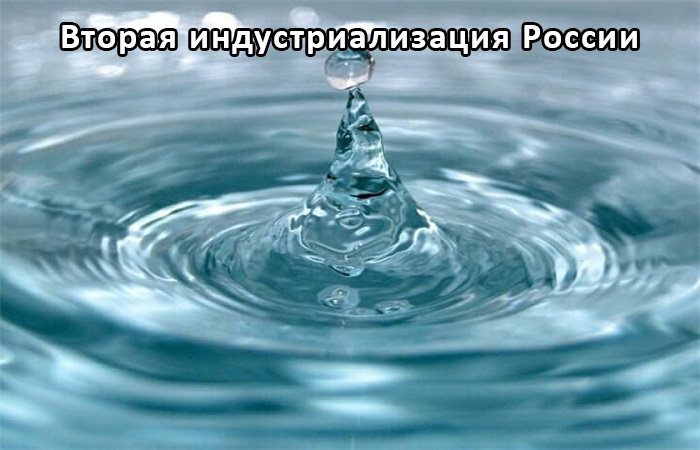The iron (III) oxide, properties, preparation, chemical reactions

The iron (III) oxide, properties, preparation, chemical reactions.
The iron (III) oxide is an inorganic substance and has chemical formula Fe2O3.
Brief description of the iron (III)oxide
Modification of iron (III)oxide
Physical properties of iron (III)oxide
Chemical properties of iron (III)oxide
Chemical reactions of iron (III)oxide
The application and use of iron (III)oxide
Brief description of the iron (III) oxide:
Iron oxide (III) is an inorganic substance and a red-brown color.
The iron (III)oxide contains three atoms of oxygen and two atoms of iron.
The chemical formula of iron (III)oxide Fe2O3.
Insoluble in water. Water does not react.
Thermally stable.
The iron (III) oxide – amphoteric oxide with a large predominance of basic properties. As amphoteric oxide exhibits depending on conditions either basic or acidic properties.
Modification of iron oxide (III):
Known crystal modifications of iron: α – Fe2O3, γ-Fe2O3.
Physical properties of iron (III) oxide*:
| Parameter name: | Value: |
| Chemical formula | Fe2O3 |
| Synonyms and foreign language names | iron(III) oxide (eng.)
hematite (Rus.) haematite (Rus.) |
| The type of substance. | inorganic |
| Appearance | red-brown trigonal crystals |
| Color | red-brown |
| Taste | —** |
| The smell | — |
| Aggregate state (at 20 °C and atmospheric pressure of 1 ATM.) | solid |
| Density (state of matter – solid, at 20 °C), kg/m3 | 5242 |
| Density (state of matter – solid, at 20 °C) g/cm3 | 5,242 |
| Boiling point, °C | 1987 |
| Melting point, °C | 1566 |
| Molar mass, g/mol | 159,69 |
Note:
* iron oxide α-form.
** — no data.
Obtaining iron oxide (III):
Found in nature in the form of the minerals hematite (red iron ore), limonite and maghemite.
The iron (III) oxide is obtained by the following chemical reactions:
1. oxidation of iron:
4Fe + 3O2 → 2Fe2O3.
2. thermal decomposition of poligidrat iron oxide (III):
Fe2O3•nH2O → Fe2O3 + nH2O (t = 500-700 oC).
3. thermal decomposition of iron metagalaktika:
2FeO(OH) → Fe2O3 + H2O (t = 500-700 oC).
4. thermal decomposition of iron hydroxide (III):
2Fe(OH)3 → Fe2O3 + 3H2O (t°).
5. thermal decomposition of iron sulfate (III):
Fe2(SO4)3 → Fe2O3 + 3SO3 (t = 500-700 oC).
Chemical properties of iron (III) oxide. Chemical reactions of iron (III) oxide:
Iron oxide (III) relates to amphoteric oxides, but with great predominance of basic properties.
Chemical properties of iron oxide (III) is similar to the amphoteric properties of oxides of other metals. So it is characterized by the following chemical reactions:
1. the reaction of iron oxide (III) with aluminum:
2Al + Fe2O3 → 2Fe + Al2О (t°).
In the reaction, the formed aluminium oxide and iron.
2. the reaction of iron oxide (III) with carbon:
Fe2O3 + 3C → 2Fe + 3СО (t°).
The reaction produces iron and carbon dioxide.
3. the reaction of iron oxide (III) with hydrogen:
Fe2O3 + H2 → 2FeO + H2O (t°),
Fe2O3 + 3H2 → 2Fe + 3Н2О (t = 1050-1100 °C),
3Fe2O3 + H2 → 2Fe3O4 + H2O (t = 400 °C).
The reaction in the first case, the formed iron oxide (II) and water, and the second iron and water, the third oxide iron (II, III) and water.
4. the reaction of iron oxide (III) with iron:
Fe2O3 + Fe → 3FeО (t = 900 °C).
The reaction produced iron oxide (II).
5. the reaction of iron oxide (III) with a sodium oxide:
5Na2О + Fe2O3 → 2Na5FeО4 (t = 450-500 °C).
The reaction produced a salt ferrate sodium.
6. the reaction of iron oxide (III) with magnesium oxide:
MgO + Fe2O3 → MgFe2О4 (t°).
The reaction produced a salt – magnesium ferrite.
7. the reaction of iron oxide (III) with copper oxide (II):
CuO + Fe2O3 → CuFe2О4 (t°).
The reaction produced a salt – ferrite copper.
8. the reaction of iron oxide (III) with titanium oxide:
Tio + Fe2O3 → TiFe2О4 (t°).
The reaction produced a salt – ferrite of titanium.
9. the reaction of iron oxide (III) oxide of manganese:
MPO + Fe2O3 → MnFe2О4 (t°).
The reaction produced a salt – ferrite of manganese.
10. the reaction of iron oxide (III) oxide of Nickel:
PIO + Fe2O3 → NiFe2О4 (t°).
The reaction produced a salt – ferrite Nickel.
11. the reaction of iron oxide (III) oxide cadmium:
CdО + Fe2O3 → CdFe2О4 (t°).
The reaction produced a salt – ferrite cadmium.
12. the reaction of iron oxide (III) with zinc oxide:
ZnО + Fe2O3 → ZnFe2О4 (t = 450-500 °C),
ZnО + Fe2O3 → Fe2ZnО4 (t = 450-500 °C).
The reaction produced iron oxide-zinc.
13. the reaction of iron oxide (III) with calcium oxide:
CaO + Fe2O3 → CaFe2О4 (t = 900-1000 °C)
The reaction formed a calcium oxide-iron.
14. the reaction of iron oxide (III) oxide with carbon:
Fe2O3 + 3СО → 2Fe + 3СО2 (t = 700 °C),
Fe2O3 + CO → 2FeО + CO2 (t = 500-600 °C),
3Fe2O3 + CO → 2Fe3О4 + CO2 (t = 400 °C),
The reaction in the first case is formed of iron and carbon dioxideand the second oxide iron (II) and carbon dioxide gasin the third oxide iron (II, III) and carbon dioxide gas.
15. the reaction of iron oxide (III) with sodium hydroxide:
Fe2O3 + 2NaOH → 2NaFeO2 + H2O (t = 600 oC, p).
The reaction produced a salt – ferrite sodium and water. The reaction takes place under excess pressure.
16. the reaction of iron oxide (III) with sodium carbonate:
Fe2O3 + Na2СO3 → 2NaFeO2 + CO2 (t = 800-900 oC).
In the reaction, the formed salt is a sodium ferrite and carbon monoxide.
17. the reaction of iron oxide (III) with hydrofluoric acid:
Fe2O3 + 6HF → 2FeF3 + 3H2O.
As a result of chemical reaction it turns out salt is a fluoride of iron and water.
18. the reaction of iron oxide (III) with nitric acid:
Fe2O3 + 6HNO3 → 2Fe(NO3)3 + 3H2O.
As a result of chemical reactions obtained salt – nitrate of iron and water. Nitric acid is a dilute solution.
Similar are the reactions of iron oxide and other acids.
19. the reaction of iron oxide (III) with hydrogen bromide (bromoderma):
Fe2O3 + 6HBr → 2FeBr3 + 3H2O.
As a result of chemical reactions obtained salt – bromide of iron and water.
20. the reaction of iron oxide (III) with yodovidona:
Fe2O3 + 6HI → 2FeI3 + 3H2O.
As a result of chemical reactions obtained salt – iodide of iron and water.
21. the reaction of iron oxide (III) with ferric chloride:
Fe2O3 + FeСl3 → 3FeOCl3 (t = 350 oC).
As a result of chemical reaction is obtained the oxide of chloride of iron.
22. the reaction of thermal decomposition of iron oxide (III):
6Fe2O3 → 4Fe3O4 + O2 (t = 1200-1390 oC).
The chemical reaction turns the iron oxide (II, III) and oxygen.
The application and use of iron oxide:
The iron oxide used in the steel industry for iron smelting, as catalyst in chemical and petrochemical industry, as a food additive (E172), as a component of ceramics, paints, etc. purposes.
Note: © Photo //www.pexels.com, //pixabay.com



